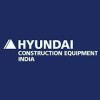Filter interviews by
R L Steels & Energy Junior Engineer Interview Questions and Answers
R L Steels & Energy Junior Engineer Interview Experiences
1 interview found
Interview Questionnaire
3 Questions
- Q1. (1) what is transformer and it's working principle?
- Ans.
A transformer is an electrical device that transfers electrical energy from one circuit to another through electromagnetic induction.
Transformers are used to step up or step down voltage levels in power transmission and distribution systems.
They work on the principle of electromagnetic induction, where a changing magnetic field induces an electromotive force (EMF) in a coil.
Transformers consist of two coils, a primary ...
- Q2. What is transistor?
- Ans.
A transistor is a semiconductor device used to amplify or switch electronic signals and power.
Transistors are used in electronic devices such as radios, televisions, and computers.
They come in two types: bipolar junction transistors (BJTs) and field-effect transistors (FETs).
Transistors have three terminals: the emitter, base, and collector.
They can be used as amplifiers by controlling the amount of current flowing thr...
- Q3. What is diode?
- Ans.
A diode is an electronic component that allows current to flow in only one direction.
It has two terminals, an anode and a cathode.
It is commonly used in rectifiers, voltage regulators, and signal limiters.
It can be made of silicon, germanium, or other materials.
It has a forward voltage drop that varies depending on the material and construction.
It can be used to convert AC to DC in power supplies.
Top trending discussions






Interview questions from similar companies

Interview Questionnaire
4 Questions
- Q1. What is 7qc tool, why we use it ?
- Ans.
7QC tools are a set of quality control tools used to identify and solve quality problems in manufacturing processes.
7QC tools include Pareto chart, cause-and-effect diagram, control chart, histogram, scatter diagram, flowchart, and check sheet.
They help in identifying and analyzing quality problems, determining root causes, and implementing corrective actions.
They are used to improve product quality, reduce defects, an...
- Q2. What ia PPAP and APQP?
- Ans.
PPAP and APQP are quality management systems used in manufacturing.
PPAP stands for Production Part Approval Process and is used to ensure that manufactured parts meet customer requirements.
APQP stands for Advanced Product Quality Planning and is used to plan and manage the design and development of new products.
Both systems are commonly used in the automotive industry but can be applied to other manufacturing industrie...
- Q3. What is pareto?
- Ans.
Pareto is a principle that states 80% of effects come from 20% of causes.
Also known as the 80/20 rule
Used in business to identify the most important factors
Can be applied to various fields such as economics, engineering, and social sciences
Example: 80% of a company's profits come from 20% of its customers
- Q4. How to calculate the OEE?
- Ans.
OEE can be calculated by multiplying Availability, Performance, and Quality percentages.
Calculate Availability by dividing Operating Time by Planned Production Time.
Calculate Performance by dividing Actual Production by Maximum Production.
Calculate Quality by dividing Good Units by Total Units Produced.
Multiply Availability, Performance, and Quality percentages to get OEE.

I appeared for an interview before Mar 2024, where I was asked the following questions.
- Q1. Why do you want to work here
- Q2. What are your future plans

I applied via Naukri.com and was interviewed in Aug 2023. There were 4 interview rounds.

(3 Questions)
- Q1. Tell me about yourself?
- Q2. Why do we hire you?
- Q3. What salary did you expect
(3 Questions)
- Q1. Tell me about your job profile? Roles Responsibilities.
- Q2. Tell be about manufacturing process which you have been seen in your career
- Q3. What are core tools of AIAG?
- Ans.
Core tools of AIAG include FMEA, PPAP, MSA, SPC, and APQP.
FMEA (Failure Mode and Effects Analysis) is used to identify and prioritize potential failure modes in a process.
PPAP (Production Part Approval Process) is used to ensure that suppliers meet customer requirements.
MSA (Measurement Systems Analysis) is used to assess the quality of measurement systems.
SPC (Statistical Process Control) is used to monitor and contro...
(3 Questions)
- Q1. What are yours failures?
- Ans.
I have experienced failures in project deadlines, communication, and technical solutions.
Missed project deadlines due to underestimating tasks
Miscommunication with team members leading to misunderstandings
Implemented technical solutions that did not meet requirements
- Q2. What are your achievements?
- Q3. What is heat treatment process
- Ans.
Heat treatment process is a method used to alter the physical and sometimes chemical properties of a material through heating and cooling.
Involves heating the material to a specific temperature
Holding it at that temperature for a set amount of time
Then cooling it at a controlled rate
Can be used to increase hardness, improve machinability, or enhance other properties
Common techniques include annealing, quenching, temper

I applied via Walk-in and was interviewed in Dec 2022. There were 3 interview rounds.

(3 Questions)
- Q1. What is line balancing
- Ans.
Line balancing is the process of evenly distributing workload among workstations in a production line to optimize efficiency.
Line balancing aims to minimize idle time and maximize productivity
It involves assigning tasks to workstations based on their processing times
Example: In a manufacturing plant, line balancing ensures each workstation has a similar amount of work to do
- Q2. What is assembly balancing
- Ans.
Assembly balancing is the process of optimizing the work distribution among different workstations to improve efficiency and productivity.
Assembly balancing involves assigning tasks to different workstations in a way that minimizes idle time and maximizes throughput.
It helps in achieving a smooth flow of work and prevents bottlenecks in the production process.
Factors considered in assembly balancing include task time, ...
- Q3. What is cycle time and tact time
- Ans.
Cycle time is the total time it takes to complete a process, while tact time is the time it takes to produce one unit.
Cycle time includes all the time spent on a process, including wait time and processing time.
Tact time is the rate at which a product must be produced to meet customer demand.
For example, if a process takes 10 minutes to complete and the customer demand is 100 units per hour, the tact time would be 0.6 ...
(2 Questions)
- Q1. What is production and quality
- Ans.
Production is the process of creating goods or services, while quality refers to the standard of those goods or services.
Production involves the manufacturing or creation of goods or services.
Quality refers to the standard or level of excellence of those goods or services.
Production and quality are closely linked as the goal is to produce high-quality products efficiently.
Examples: In a manufacturing plant, production ...
- Q2. What is OLE and OEE
- Ans.
OLE stands for Overall Equipment Effectiveness and OEE stands for Overall Labor Effectiveness.
OLE measures the overall performance of equipment in a manufacturing plant.
OEE measures the overall performance of labor in a manufacturing plant.
Both metrics are used to identify areas for improvement and optimize efficiency.
Example: OLE can help identify equipment downtime and OEE can help identify labor productivity issues.

I applied via Recruitment Consulltant and was interviewed in Aug 2023. There were 2 interview rounds.
(1 Question)
- Q1. Process knowledge on Electroplating Process from start to end
(1 Question)
- Q1. Salary discussion
Interview Preparation Tips

I applied via Naukri.com and was interviewed in Nov 2022. There were 4 interview rounds.

(1 Question)
- Q1. Knowing resume details company details.
(1 Question)
- Q1. Regarding pcb circuit boards and reparing Technics.
(1 Question)
- Q1. Techenical questions repairing and theory knowledge about wt job you applied.
Interview Preparation Tips

(1 Question)
- Q1. Basic and advance electronics test
(1 Question)
- Q1. Documents Verification

I applied via Naukri.com and was interviewed in Dec 2023. There were 2 interview rounds.
(2 Questions)
- Q1. Tell me About yourself
- Q2. Where you see yourself in next 3 years
(3 Questions)
- Q1. Tell me previous jobs profile
- Q2. Tell me your previous responsibilities
- Q3. Tell me your achievements

(2 Questions)
- Q1. Questions will be asked on previous company roles and responsibilities.
- Q2. Depends upon previous experience.
(2 Questions)
- Q1. Basics on structure and finishings
- Q2. Questions on structure and finishings
Interview Preparation Tips
R L Steels & Energy Interview FAQs
Tell us how to improve this page.
R L Steels & Energy Interviews By Designations
Interview Questions for Popular Designations
- Junior Engineer Electrical Interview Questions
- Junior Engineer Production Interview Questions
- Junior Mechanical Engineer Interview Questions
- Junior Engineer Trainee Interview Questions
- Junior Quality Engineer Interview Questions
- Junior Technician Interview Questions
- Junior Engineer - Quality Assurance Interview Questions
- Junior Software Developer Interview Questions
- Show more
Junior Engineer Interview Questions from Similar Companies
R L Steels & Energy Junior Engineer Reviews and Ratings
based on 1 review
Rating in categories
|
Assistant Manager
15
salaries
| ₹5.5 L/yr - ₹10.7 L/yr |
|
Engineer
10
salaries
| ₹3.4 L/yr - ₹4.7 L/yr |
|
Senior Manager
10
salaries
| ₹13 L/yr - ₹15.5 L/yr |
|
Senior Engineer
8
salaries
| ₹3.6 L/yr - ₹6 L/yr |
|
General Manager
7
salaries
| ₹36 L/yr - ₹45 L/yr |

Dhoot Transmission

Amphenol Interconnect

Prama Hikvision India

Ag Industries
- Home >
- Interviews >
- R L Steels & Energy Interview Questions >
- R L Steels & Energy Junior Engineer Interview Questions











